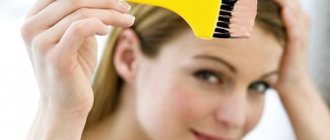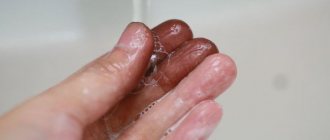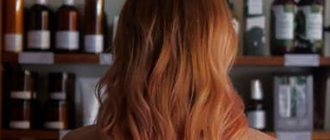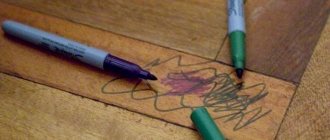How and with what to remove hair dye from colored clothes?
How to get rid of hair dye stains on colored clothes?
- Fresh hair dye that has not been absorbed into clothing can be removed immediately by rinsing thoroughly. After the stain has disappeared, the item must be washed in a washing machine with the appropriate type of washing powder or laundry soap.
- Today on sale you can find special stain removers designed for colored laundry. This product must be used strictly in accordance with the instructions.
- Fresh hair dye on fabric can also match regular hairspray. It must be sprayed onto the stain and rubbed thoroughly. Immediately after manipulating the varnish, clothes must be washed in a washing machine or with laundry soap.
- Hydrogen peroxide is very effective in combating hair dye stains on clothes. This product just needs to be applied to the stain and wait about half an hour. After exposure to peroxide, the item must be washed.
- An analogue of hydrogen peroxide can be table vinegar 9 percent. This remedy must also be poured directly onto the affected area and wait up to half an hour. After rinsing vinegar from clothes, you need to wash them in a machine or by hand (with laundry soap).
- As we all know, the best means for removing paint are various solvents, nail polish remover, kerosene, gasoline or acetone. A similar product must be applied to a sponge or other cloth and rubbed onto the stain. After treatment with such substances, clothes must be washed.
Attention! It is advisable to test any of the listed products before using them on colored fabrics. To do this, you need to pour a little substance onto a piece of fabric hidden from human eyes. After waiting the required half hour, you need to draw conclusions whether the product has damaged the fabric itself or whether its color has deteriorated. If changes in the structure or color of the material have been recorded, it is better to refuse to use such a product, as it can completely ruin the thing. In such cases, it is recommended to contact specialized establishments - dry cleaners.
How and with what to remove hair dye from white clothes?
How to get rid of hair dye stains on white clothes?
Colorless or white fabrics are less delicate than colored ones - when working with them, the risk of color loss is reduced to zero. That is why any of the products suitable for colored products can be used for this type of clothing. You can also remove hair dye stains from white clothes using more radical and stronger means:
- The good thing about white fabrics is that you can use bleaches on them. Bleach will help remove any type of stain and return your clothes to their original white color. The only drawback of this product is its destructive effect on the structure of the material. It is advisable to read the algorithm of actions when working with bleach on the label of a specific product.
- Antipyatin soap has proven itself very well in the fight against stains of various types for white linen. It is also better to use it in accordance with the instructions on the package.
- If you don’t have industrial means of dealing with hair dye stains at hand, you can use the folk method of getting rid of them. To do this, you need to apply glycerin to the contaminated area and rub it. After glycerin therapy, it is advisable to rinse the fabric. The next step is to apply a saline solution and 9% table vinegar to the stain. After a couple of minutes, traces of paint should evaporate. If this does not happen, then you can use heavy artillery - a 10% ammonia solution. Ammonia must be applied to the fabric, wait a few minutes and put the item in the washing machine or wash it by hand using laundry soap.
- An analogue of industrial bleach can be a home remedy consisting of 3.5 liters of cold water and 1/4 cup of bleach. By soaking white clothes in a similar solution, you can not only whiten them, but also remove unwanted stains from hair dye.
- Another effective way to combat serious stains is a hot mixture of hydrogen peroxide and ammonia. To prepare it, you need to add a tablespoon of both ingredients to a glass of water. Dip a cotton pad into an explosive mixture heated to 60 degrees and apply it to the stain. When the solution is completely absorbed into the material, it must be rinsed thoroughly. The rinsed item simply remains to be washed.
Note! When working with cotton fabrics, ammonia should be used only in diluted form. To do this, it is advisable to soak the item in water with a few drops of ammonia solution for a couple of minutes. After the specified period, the clothes must be washed.
Is it possible to store an acrylic bathtub in the cold?
In areas with temperatures below -60 degrees, acrylic may burst, but it is unlikely that in your region, even in winter, the temperature drops to such values. Acrylic can withstand temperatures up to -40, -50 degrees. Acrylic can burst if the bath is in the cold and you immediately pour boiling water into it (see picture).
Interesting materials:
How to use Google Maps without the Internet? How to use an SD card with main memory? How to fix a SIM card? How to change SD card format on Mac? How to change the language on Google Maps on mobile? How to change a payment card on Google Play? How to measure a route on Google map? How to measure distance on Yandex Maps from a mobile device? How to remove the Xiaomi SIM card tray? How to copy a map from Google Maps?
How to remove hair dye from carpet?
How to remove hair dye stain from carpet?
- If a hair dye stain has just formed, you can try to wipe it off with a damp cloth (preferably alcohol).
- If you couldn’t get rid of the blot with a napkin, you should try wiping it off with a sponge and soapy water. In this case, you will have to apply the sponge until the stain disappears.
- The third method is more radical. To use it, you need to dissolve a tablespoon of dishwashing detergent and table vinegar in 2 glasses of cold water. You need to wet a sponge in the resulting solution and wipe the stain on the carpet with it. It is advisable to blot the stain with a dry white rag each time after sponging in order to absorb the paint. When the blot begins to disappear, you will need to wet the sponge in clean cold water and apply it to the same place, each time blotting it with a dry, clean rag. In the most advanced cases, you can additionally treat the stain with a sponge with alcohol, alternating it with a dry cloth.
- The fourth method is very similar to the third. The only difference is that instead of vinegar, a tablespoon of ammonia is added to the soap solution. When dipping a sponge into this solution, it must be applied to the stain every 5 minutes, blotting it with a dry cloth. After half an hour, it is advisable to wipe the blot with a sponge dipped in clean cold water and dry it with a clean cloth.
- The most radical method of cleaning carpets from hair dye stains is the method of using hydrogen peroxide. This substance must be dropped from a pipette onto the blot and left for a day. If after the specified time the stain has not disappeared, you can try repeating the procedure again.
Note! When using any of the methods (vinegar, ammonia, hydrogen peroxide), it is recommended to first test on a hidden area of the carpet. To do this, you need to drop the product onto such an area and leave it for at least half an hour to an hour. If after the specified period of time the carpet has not lost its color and its structure has not been damaged, then you can try the product on the front part of the carpet.
Recommendations for using stone sanitary ware
Various rocks are used to make natural sinks and basins, such as granite, marble, basalt, sandstone and others. In addition to a variety of natural shades and patterns, these materials are durable, resistant to moisture and chemicals. Minor difficulties with cleaning arise when choosing a stone with increased porosity.
They contain 70% detailed natural material combined with synthetic resins, adhesives and dyes. In homes, you can most often find sinks made of granite or quartz, the composite of which is resistant to mechanical damage and contamination.
To extend the life of your stone sink, you should follow the recommendations:
- avoid exposure to too high or low temperatures (liquid, surfaces of vessels), contrasting differences in hot and cold water;
- Do not throw hard, sharp objects into the sink to avoid scratches or scratches;
- do not use aggressive chemicals for cleaning;
- when using household chemicals, choose formulations intended for composite materials;
- If you are not using sanitary products, leave them dry and free of dirt, cleaning agents and grease.
Timely and proper cleaning will prevent the appearance of persistent stains or mildew.
How to remove hair dye from furniture?
How to get rid of hair dye stains on furniture?
- You can remove hair dye stains from upholstered furniture using a damp cloth. True, this method will only be appropriate if the stain is fresh.
- If a blot placed on upholstered furniture has already become embedded in it, then you will have to suffer a little. First, the pigmented area of the fabric will need to be rubbed with a sponge and soapy water. Then the stain must be filled with warm (heated in the microwave or steamed) glycerin. A solution of ammonia and salt will help remove residual glycerin from the material.
- You can get rid of hair dye stains from cabinet furniture using any of the strong agents: special hair dye removers or “Lokon”, acetone, solvent, nail polish remover, chlorine-containing liquids (bleach, Domestos, Toilet Duck, etc. ), vinegar, ammonia, hydrogen peroxide, citric acid, etc.
- It is first recommended to test any of the products on an inconspicuous area of the furniture in order to make sure that the product will not corrode the surface and discolor it.
Professional cleaning products
Specialized household chemicals for stone sinks are represented by the following types of products:
- Cleaning powders with fine abrasives. They help clean stubborn stains, limescale and rust from your sink. Since the composition includes solid particles, mechanical action is undesirable. Dilute the substance into liquid gels with chlorine, apply for 2-3 minutes, and rinse gently.
- Liquid gels with chlorine. The substances remove even deep traces of lime and dark marks, additionally killing fungi and microbes. For deep disinfection, spread them out for 10-15 minutes.
- Sprays and liquids for composite materials. Actively removes most stains from stone sinks. They are applied with a soft sponge or sprayed and washed off with warm water after 2-3 minutes.
Among the popular brands selling plumbing products made from artificial and natural stone are the following:
Recommendation! To remove infiltrated contaminants, salt from water, and restore the water-repellent properties of the surfaces of stone sinks and countertops, it is recommended to wipe the surface with a water-repellent solution once every 1-3 months.
How to remove hair dye from the floor?
How to remove hair dye stain from floor?
If the floor covering has been damaged by a hair dye stain, then depending on the material it is made of, you can try the following remedies:
- The tiles can be scrubbed with any of the existing aggressive agents: acetone, solvent, Lokon, acid, chlorine and all their derivatives.
- It is better not to scrub parquet or wooden floors coated with varnish with acetone-containing products, as there is a risk of removing the coating itself.
- An effective remedy in this case is considered to be a tandem of Pemolux soda 5 and nail polish remover without acetone - with the help of a sponge and these products, paint can be easily removed from the floor surface.
- The curling product “Lokon” also works well on hair dye stains on a wooden surface. After applying it to a sponge, you simply rub the stain and wash it off with a clean cloth.
Household chemicals
For daily care and cleaning of a stone sink, laundry soap, all dishwashing detergents, and melamine sponges are suitable. Intensive cleaning and removal of stubborn stains is carried out using special products labeled “for composites” and dishwasher tablets.
Chemicals for cleaning stone kitchen sinks:
- Abrasives - Pemolux and its analogues. They are diluted to a paste, which is applied to the stain and then washed off. However, you cannot rub the stains.
- Chlorine-containing liquids and gels will quickly remove plaque, disinfect the sink, and eliminate unpleasant odors from the drain.
- Products labeled “for composites” are the best for removing stains. After spraying, wipe with a soft sponge and rinse with water.
How to remove hair dye from plastic?
How to get rid of hair dye stains on plastic?
- An excellent means of removing hair dye from plastic surfaces is white spirit, acetone, thinner, kerosene, gasoline and other similar products.
- Also, many types of plastic are not afraid of the effects of acid - vinegar, citric acid, and other bathroom and kitchen products containing acids can be used on such surfaces.
- Chlorine-containing compounds can help remove hair dye stains from a plastic surface - Domestos, Toilet Duck, bleach (if the plastic is white), various cleaning products with chlorine.
How not to wash artificial stone products
Sinks are made from agglomerate containing 91-93% stone chips and from acrylic containing 70-75% quartz stone. The first ones are waterproof, durable, resistant to mechanical damage, are not afraid of hot objects, and do not absorb dirt. You can clean an agglomerate stone sink in your kitchen with mild detergents and a sponge. The appearance of efflorescence, stains from juices or rust indicates a violation of production technology, or it is a fake.
Acrylic is difficult to maintain and is inferior in strength to artificial granite and marble. The acrylic sink is warm to the touch and blends into the stone countertop with no visible seams. This composite material is chemically inert, but due to the high content of polymethyl methacrylate and methyl methacrylate, prolonged contact with aggressive cleaning agents should be avoided. If the operating rules are not followed, acrylic stone quickly becomes covered with scratches, through which contaminants penetrate deep into its structure.
You cannot clean artificial stone:
- acids;
- paint solvents;
- acetone;
- preparations containing methylene chloride;
- means for cleaning metal, ovens.
These substances destroy the surface of the acrylic stone, as well as the silicone seals of the drain hole. If acid, solvent, or acetone accidentally gets into the sink, they should be quickly washed off with plenty of soapy water.
Artificial stone can be cleaned without the use of metal brushes, rough sponges, or abrasives.
How to clean hair dye from a bathtub?
How to get rid of hair dye stains in the bathroom?
On the shelves of modern industrial stores you can find special products for washing and cleaning bathtubs. The composition of such products directly depends on the type of bathroom itself. They often contain various acids, chlorine-containing compounds and other chemical reagents. Almost any similar product can deal with hair dye stains on the surface of the bathroom. If you don’t have such an industrial product at hand, you can try using other available products to remove hair dye in a bath:
- To prepare the first product, you need to mix soda, dishwashing detergent, vinegar and use a sponge to rub the resulting stain.
- The second method is to wipe the stain with a cotton pad and nail polish remover with acetone.
- The third method is based on the use of chlorine. To use it, you need to pour 1/4 bottle of bleach and 3/4 water into a spray bottle. The resulting substance should simply be sprayed onto the stain and left for a few minutes. If you didn’t manage to get rid of the paint the first time, you can try again.
Whichever of the methods given in the article you choose, always remember about personal safety and the risk of completely ruining the item. Therefore, be sure to use protective equipment (gloves, safety glasses or clothing), and also conduct preliminary tests on hidden areas of the material from which you want to remove hair dye.
Rules for caring for a synthetic stone sink
Properly caring for an artificial stone sink is easier than eliminating the consequences of careless use. Do not leave spilled tea, coffee, colored liquids in the bowl, or soak dirty dishes.
Daily care includes:
- freeing the bowl and wing surface from food debris, dishes, and other items;
- washing the stone surface after use.
The washed stone sink is rinsed with warm water and wiped with a sponge or soft cloth, which prevents the appearance of smudges.
Intensive cleaning is carried out once a week with a solution of household bleach, bleach, and special products. The cleaned pores of the artificial stone are covered with wax and impregnated with refined vegetable oil in order to prevent the formation of colored spots. Professional impregnation is carried out every 3-5 years.
Do not pour boiling water into the sink, place pots and pans on acrylic stone without protective stands, or use the wing as a cutting board. A rubber or plastic mat will protect the bottom of the stone bowl from sharp cutlery. Detected chips and deep scratches should be promptly repaired using the services of professionals.











